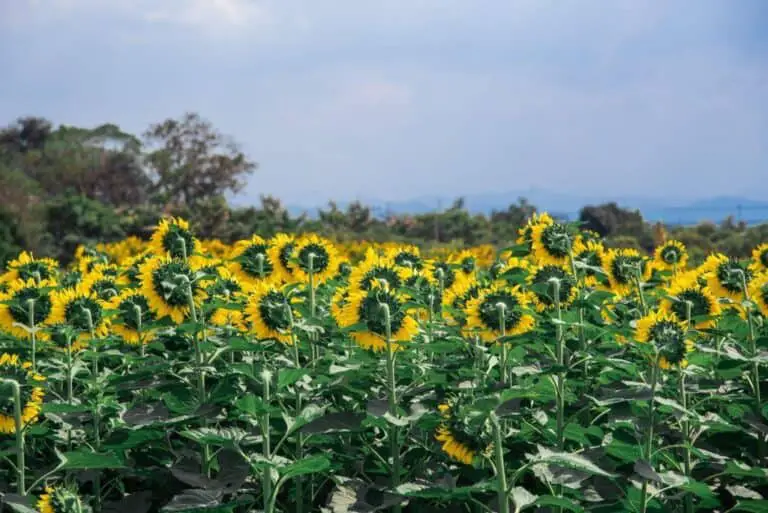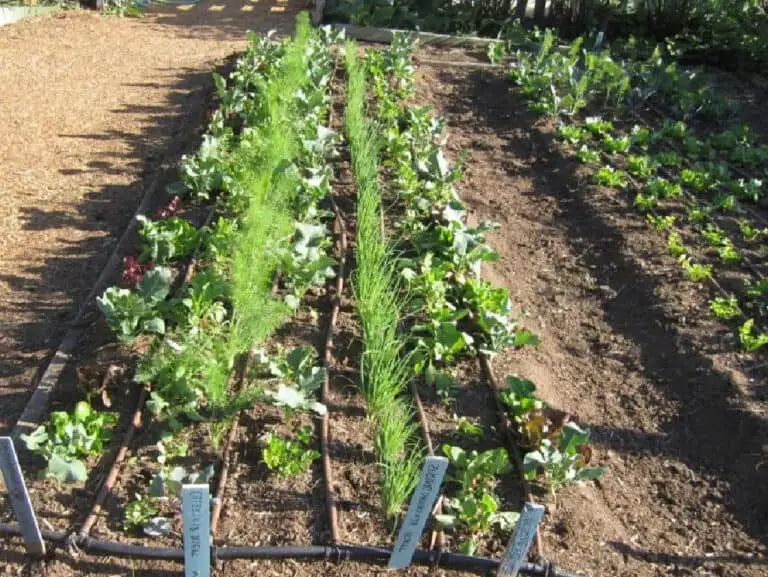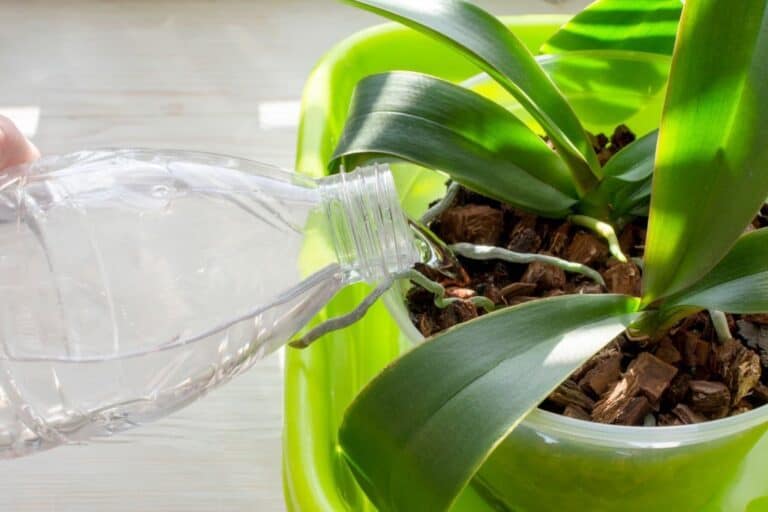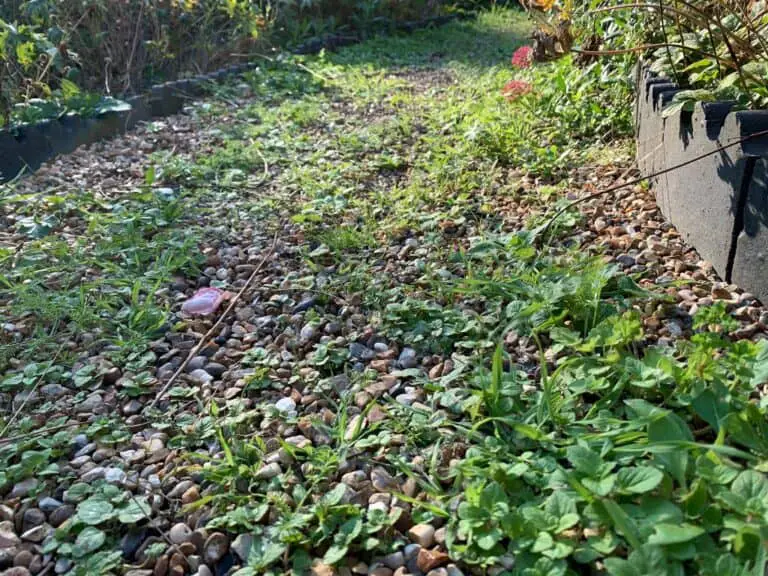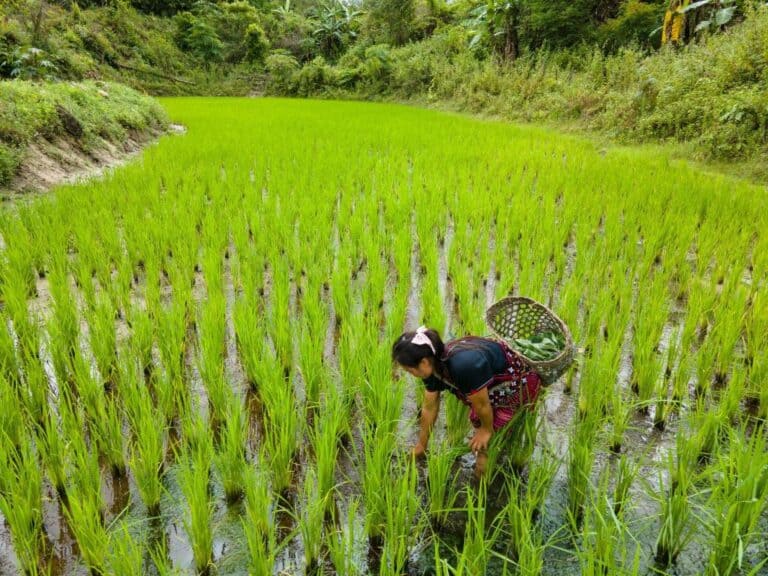Jade Plant Dropping Leaves? Here Are 7 Common Reasons
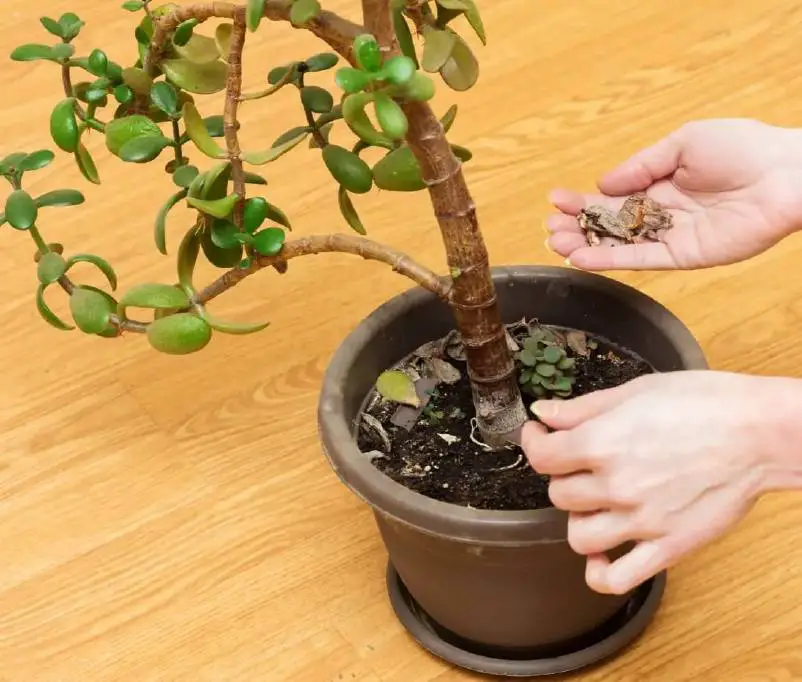
A jade plant dropping leaves is a normal part of aging. However, if you find your jade plant dropping leaves at an excessive rate, there may be an issue that needs addressing. This article aims to discuss the 7 most common reasons you’ll notice leaf drops on a jade plant.
Crassula Ovata, or more commonly known as the jade plant, lucky plant, money plant or money tree, is a type of succulent plant native to South Africa and Mozambique. It is a common houseplant worldwide due to its low maintenance. However, sometimes you will notice your jade plant dropping leaves, and this calls for some TLC. Crassula Ovata is considered hardy in U.S. Department of Agriculture plant hardiness zones 10 and 11.
Why Is My Jade Plant Dropping Leaves?
A jade plant will drop leaves for a number of reasons, and I will talk you through each. Naturally, the plant will drop older leaves, and this is normal. But if you notice a considerable amount of leaves falling off the jade plant, then it may be due to the watering schedule, the potting mix, light, temperature, or pests.
1. Overwatering
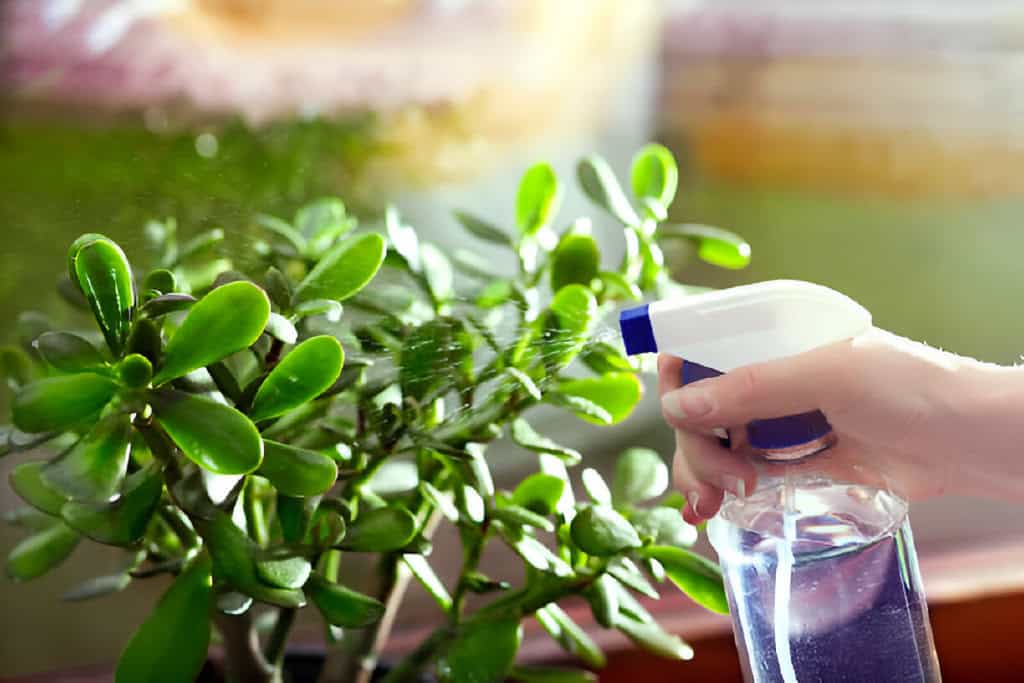
Overwatering is one of the main causes of a jade plant dropping leaves. It is well known that succulents and cactuses can store water in their stems for long periods of time – which is why they survive so well in desert environments.
Not only does overwatering a jade plant cause the dropping of your jade plant leaves, but it will also lead to root rot and eventually, a jade plant falling over. Crassula Ovata hates to be left in soggy, wet soil, so always ensure you are using a container with drainage holes and never leave your houseplant standing in water.
Overwatering can often lead to a dying jade plant and will attract annoying pests such as scale insects, mealybugs and fungus gnats. It will also stump the growth of your plant and leave you wondering, ‘how big do jade plants get?‘
What Does an Overwatered Jade Plant Look Like?
If you have an overwatered jade plant, then the leaves may begin to drop. You will also notice the jade plant leaves turning yellow and drooping. When you feel the leaves, they will be soft and soggy to touch, and sometimes the branches will also feel this way.
These are all symptoms of root rot, and if this happens, you should check the bottom of the plant. If the roots are covered in a slimy, black/brown substance, then unfortunately it means it is rotting at the roots. Leaving the root rot to continue to spread will cause your jade plant leaves turning black.
If you think your jade plant is dropping leaves due to root rot, then you should immediately remove the plant from its pot, wash away the soil, cut away any damaged roots and repot.
2. Underwatering
As with overwatering, underwatering can also be a cause of the jade plant dropping leaves. It’s all about finding a healthy balance. Underwatering can also cause the leaves to turn red.
For succulents in general, as a rule of thumb, you should always wait for the soil to completely dry out until you rewater. When you water, you should be giving the plant a thorough soaking until the water comes out of the drainage holes. More water, less often!
In the summer months, you should be watering when the top 2.5 inches of soil dry out, as this is when a jade plant shoots and grows.
What Does an Underwatered Jade Plant Look Like?
An underwater jade plant will begin to shed its leaves rapidly. You should check the lower leaves on the plant – if they look shriveled and like they are about to snap off, then you should check the soil. If it is completely dry, then your plant is very thirsty indeed.
It can be challenging to nail the correct watering schedule at first, but once you get used to your plant’s root system, then it will be a breeze, and you will know exactly when to water the plant.
3. Insufficient Light
Succulents in general thrive in a brightly lit spot. If you have an indoor houseplant, then you should try and place it in a south-facing window.
If you find that the jade plant dropping leaves first occurs at the beginning of winter, then chances are it’s not getting enough light! You should move your Crassula Ovata near a window, but keep a safe distance from the glass, as a constant draft could be just as damaging as low light.
If you live in a particularly cold area where there is always a draft coming through the window, then you can use artificial light such as pure white CFL light bulbs. Although I would always recommend natural light over this method.
When a jade plant doesn’t get enough light or is kept in a dark room for too long it will be susceptible to succulent etiolation. This is an abnormal growth pattern of the plant. You will notice that it looks leggy, stretched out and long. This is because it is trying to reach the nearest source of light available. Luckily, this is mainly an aesthetic problem and won’t actually harm the jade plant.
4. Temperature
As mentioned above, jade plants love a bright sunny spot! And this means that they thrive best in temperatures between 55 and 75 degrees Fahrenheit. Just like a cold draft will damage your plant, a sudden change in temperature will also cause jade plant leaves to drop off. However, once the plant has adjusted to its new surroundings, the leaves will begin to grow back.
If you are wanting to move your plant to a new location, it should be done gradually over time to prevent the leaves from dropping off.
Frost will certainly kill the plant for sure, so if you live in an environment that gets super cold in the winter, bring your outdoor jade plants indoors! Just like the cold, extreme heat will also damage the jade plant, so avoid placing it near a radiator.
Just like humans, succulents can also get sunburn! So during the summer months, you should be rotating your jade plant frequently to avoid this.
5. Pests
Ergh. The word we all dread in the plant kingdom. PESTS. An infestation can spread rapidly from plant to plant, so if you think you have a pest problem with your jade plant, you should immediately remove it from all other houseplants.
The two most common pests you will find on a jade plant are mealybugs and spider mites. An infestation of either of these pests will want to be dealt with asap. Both will cause leaf drops and deformed leaves and will make your jade plant sticky and moldy.
Mealybugs on Jade Plant
‘What are mealybugs?’ I hear you cry! Mealybugs are one of the most common pests amongst succulents and are tiny little insects that suck the sap from the leaves of a jade plant. They are so small that often you won’t even think they are pests at all.
Mealybugs on jade plants will have a small, white, cottony appearance that can be deceiving to the eye and mistaken for fungus. Sometimes they may also appear to be brown or cream in color. They can, as you have probably guessed, cause dropping leaves on a jade plant.
The worst thing about mealybugs is that they spread like wildfire and like to hang out in all the nooks and crannies of your jade plant, so doing a thorough job in eliminating them can be a pain.
How do you treat mealybugs on jade plant? There are a few different options, but the easiest and quickest is using a 70% or less solution of isopropyl (rubbing alcohol). Instructions will be available on purchase, but you should be diluting in water to ensure you don’t get Phytotoxicity (leaf burn). Use a cotton pad or spray bottle to distribute evenly, and remember to get in all the hard to reach places.
This should do the trick in getting rid of your infestation, but if the pests return in a day or two, then repeat the process until they are gone forever.
Spider Mites on Jade Plant
The second most common pest that causes the jade plant to drop leaves is spider mites! But what are they? Spider mites are tiny bugs of a reddish/brown color and wreak havoc on your indoor plants. They are common in South America.
Living in colonies, you may at first mistake spider mites as being a bit of dust. Like mealybugs, the spider mites will suck all the juices out of your jade plant, and eventually, this will cause the leaves to drop off. If left untreated, the colonies will expand, and the infestation will eventually kill your jade plant.
Eek! How do I treat spider mites? Spider mites can be difficult to get rid of, but a good way is by using neem oil. This can be awkward and tricky but is needed if you are desperate to save your plant. Make sure you are applying the neem oil everywhere, as spider mites like to live in hard-to-reach places. Reapply every 2–3 days until the infestation is gone. I always use Neem Oil by Kate Blanc, simply because it is affordable and comes with a pipette, which makes application a lot easier!
Read this article on jade plant bugs to learn more about these annoying pests!
6. Potting Soil
Using the wrong potting mix will also cause your jade plant to lose leaves. Jade plants enjoy fast-draining and airy soil, anything too dense will hold too much water and cause root rot.
The best soil for jade plants is a mix of organic matter, such as peat moss, and inorganic matter, such as granite. If you go to your local garden center, you will usually be able to pick up a bag of soil specifically for succulents and cacti, and this will be good enough. If you want to order online, I recommend and use the below soils:
Organic Succulent and Cactus Soil Mix, Fast Draining Pre-Mixed Coarse Blend, 4 Quarts – affordable and great quality—this is usually my go-to for succulent soil. The organic blend is optimized for a pH of 5.5, which is ideal for a jade plant. The soil is also lightweight, fast draining, and contains 25% perlite.
Hoffman 10410 Organic Cactus and Succulent Soil Mix – alternatively, Hoffman is a well-recognized brand name, and I have no complaints about their organic succulent mix. The soil contains both perlite and peat, which makes it a well-draining mix. It also contains limestone, which works as a great pH balancer.
If your jade plant is a bonsai, then I would purchase the below dirt-free soil:
Succulent & Cactus Soil Mix – Premium Pre-Mixed Fast Draining Blend – this succulent mix by Superfly Bonsai works very well with a bonsai jade. This dirt-free, ready-to-use mix is composed of ¼ Hard Japanese Akadama, ¼ USA Pumice, ¼ New Zealand Pine Bark, and ¼ Haydite. These ingredients make for a very fast-draining soil that your jade plant will love!
A lack of nutrition will stunt the growth of your plant and also result in the loss of leaves. You should be using a balanced houseplant fertilizer once at the beginning of the growing season. Do not fertilize more than this as it can result in damage.
If you want a home remedy for fertilizer, then coffee grounds on plants work a treat. If you are looking for a shop-bought fertilizer, then Miracle-Gro Succulent Plant Food is my go-to. Either put directly onto your jade plant or mix in with water, this fertilizer always perks up my jade plants and is also really cheap. Make sure you always follow the instructions before you apply!
7. Leaf Shine Products
We all want a shiny, clean plant. But did you know that using leaf shine products can actually be the reason why your jade plant is dropping leaves. This is due to the chemicals used in the products.
If your crassula plant is dusty, then a good ol’ fashioned clean with a damp cloth will do the trick. Leaf shine products will cause the leaves of your jade plant to turn yellow.
Why Is My Jade Plant Dropping Leaves and Branches?
We have discussed above why a jade plant is dropping leaves and branches. It will be due to overwatering, underwatering, light, temperature, pests, potting soil, or leaf shine products.
I hope that the information I have provided will help you establish exactly what the issue is and that you are ready to breathe new life into your wonderful houseplant.
Will Jade Plant Leaves Grow Back?
To answer truthfully, sometimes. It all depends on what the issue is. If your jade plant has been overwatered and is subject to root rot, then you will want to focus on reviving your plant over wondering if the leaves will ever grow back.
If you have simply moved your jade plant from one room to another and it has encountered a temperature change, then yes, absolutely! Jade plant leaves will grow back once it has gotten used to its new surroundings.
Overall, a jade plant dropping leaves is a common problem for plant lovers. Most of the time the leaves will grow back if you take good care of them, and you will have a healthy, happy jade plant in no time!
Jade Plant Dropping Leaves – The Last Word!
I hope you have enjoyed this article on jade plant dropping leaves, and you can now go away fully equipped to deal with the problem. I have owned a number of jade plants over the years, and if the leaves ever fall off, it has been due to one of the above problems.
All the information I have provided has been based on my own experience of owning succulents.
To recap, jade plant dropping leaves will commonly be because of:
- Overwatering
- Underwatering
- Insufficient light
- Temperature
- Pests
- Potting Soil
- Leaf shine products


